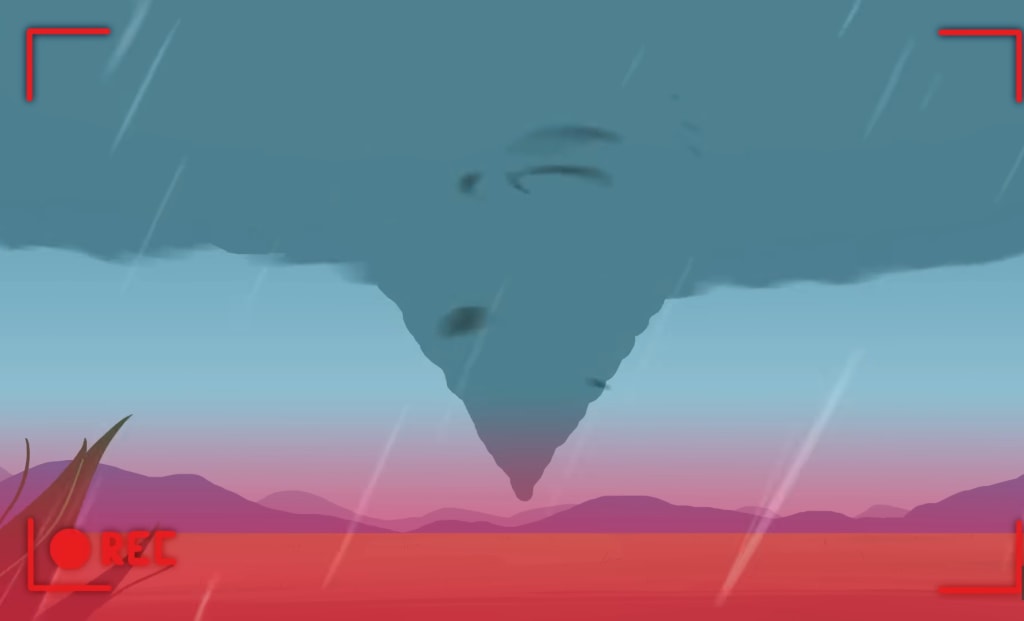How do tornadoes form?
How are tornadoes created?

They call me the tornado chaser. When the wind is strong and the weather is right, I hop in my car and follow violent storms. You might think I'm crazy, but really, I chase these powerful sky storms to learn more about them.
I want to share what I know with you. Tornadoes are fast-spinning columns of air that form within storms and touch the ground through a funnel-shaped cloud. When this happens, they rush across the Earth, posing a big danger to people and buildings. Because of this, scientists study tornadoes a lot, but there's still much we don't understand about how tornadoes start. The conditions that lead to one tornado may not create another. But we've learned a lot since people started recording tornadoes, like how to spot signs when a tornado might be forming in the sky. Do you want to join me on this adventure?
Tornadoes begin with a particular kind of thunderstorm, not just any thunderstorm. These are super-powerful, huge thunderstorms called supercells. They reach high into the sky, causing strong winds, large hailstones, flooding, and lots of lightning.
These are the storms that can create tornadoes, but only if specific conditions are present. These conditions are clues that we can measure and watch for when we're trying to predict a storm. The first thing needed for a tornado to form is rising air. Any storm begins when clouds form from condensation. This process releases heat, and heat creates the energy that makes air rise forcefully. The more condensation and the larger the storm clouds get, the stronger those upward drafts become. Supercells have particularly strong rising air. As the air climbs, it can change direction and speed up. Finally, at the base of the storm, if there's a lot of moisture, a big cloud base forms, providing the tornado with something to feed on later if it goes that far.
When all these elements are in place, a vortex can form inside the storm, creating a wide, tall column of spinning air that gets pulled upward. We call this a mesocyclone. Outside, cool, dry air starts to wrap around the back of this mesocyclone, creating something called a rear flank downdraft. This unusual situation causes a big difference in temperature between the air inside the mesocyclone and the air outside, creating the instability that allows a tornado to thrive. Then, the lower part of the mesocyclone tightens, increasing the wind's speed. If, and it's a big "if," this spinning air tube moves down into the large, moist cloud base at the bottom of the main storm, it sucks it in and turns it into a rotating wall of cloud, creating a link between the storm and the Earth. The moment that spinning cloud column touches the ground, it becomes a tornado.
Most tornadoes are small and don't last long, with winds of 65-110 miles per hour. However, some can persist for over an hour, with winds of up to 200 miles per hour. They're stunning but scary, especially if you or your town is in their path. In such cases, no one, not even tornado chasers like me, enjoy witnessing these events. However, like everything, tornadoes eventually come to an end. When the temperature difference disappears, and conditions stabilize, or when the air loses its moisture, the once-powerful storm weakens, and the tornado dissipates.
Nevertheless, meteorologists and storm chasers like me keep a lookout, always watching to see if the storm releases its tornado once again.
About the Creator
MOSTAFA SALMAN
"Exploring the depths of creativity through the written word". On a journey to share my thoughts, experiences, and imagination with the world.
Enjoyed the story? Support the Creator.
Subscribe for free to receive all their stories in your feed. You could also pledge your support or give them a one-off tip, letting them know you appreciate their work.






Comments
There are no comments for this story
Be the first to respond and start the conversation.